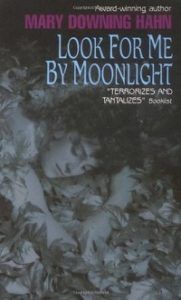An adaptation of Shaftesbury’s award-winning, groundbreaking queer vampire web series of the same name, Carmilla mixes the camp of Buffy the Vampire Slayer, the snark of Veronica Mars, and the mysterious atmosphere of Welcome to Nightvale. Content Warning for Discussion of Rape and the Sexual Abuse of a Minor. Ever since the idea of the vampire really caught fire in Western culture, it has been recognized as a predator. William Patrick Day, in his Vampire Legends in Contemporary American Culture: What Becomes a Legend Most, identifies the vampire story, from John William Polidori’s The Vampyre on to the modern day, as being the tale of a “dangerous, though charismatic, sexual predator” (3), specifically, conjuring up the fears inherent in many older vampire narratives, particularly from the Victorian era, of uncontrolled sexuality. Of uncontrolled sexual appetite and of sexualities which transgress the social norm. Indeed, Day claims, “For some this is the attraction of the vampire, the promise of the transgressive, the subversive, even the revolutionary” (4), whereas for others it is horrific. Vampire stories were cautionary tales of the dangers of desire, and of succumbing to desire. But, on the flip side, vampire stories were also cautionary tales about the danger posed by those who indulge their passions and prey on others to sate them.
via GIPHY Obviously this version of the vampire has become sidelined somewhat in modern pop culture, where vampires are heroes, sex icons, and for one brief (strange) moment in the ’80s, even rock stars. They’re romantic leads and sympathetic monsters. Even the “evil” vampires have enough feeling and “soul” to render them almost human, and certainly they blend in with the world better than the classical vampire with its idiosyncrasies that mark it as an outsider in the crowd. But even the modern vampire, for all its worldliness, is still a monster, however sympathetic. It’s still the other; the threat is still present even though the danger has been romanticized. On the surface, the vampire of Mary Downing Hahn’s Look for Me By Moonlight, Vincent, seems like the latter. A modern man, who dresses in finely tailored black clothing, drives an expensive Porsche, and plays the role of the cultured, intelligent gentleman. A poet. Just the right degree of moody affectation. How could a teenage girl resist such a handsome, sensitive older man who seems just as infatuated with her as she is with him? Did your skin just crawl? Mine too. Because while Hahn’s vampire may appear on the outside to be an urbane, modern creature of the night, inside he’s all classical, predatory vampire. He’s no Edward Cullen, he’s Dracula. His seduction of Cynda isn’t romantic, it’s horrifying. The reader can only watch, helpless, as Cynda is enthralled by him, unaware of the danger until it’s too late. And in the aftermath she resembles no one so much as Bram Stoker’s Mina, crying “Unclean. Unclean,” when the spell is broken and she realizes what has been done to her. After all, as I indicated above, there is a precedent for the vampire as sexual predator; one who gives in to their sexual appetite without compunction and preys on others. J.M. Tyree describes the spell of the vampire as involving, classically, an “effacement by seduction into an exploitative relationship between an omnisexual seducer and a parade of slave lovers—male and female—who are viewed as both interchangeable parts and as natural resources or blood blanks,” which is exactly what happens in Hahn’s novel. Vincent’s behavior, from the very beginning, is both that of a vampire playing with his food and that of a sexual predator stalking a conquest.
Vincent, the Big Bad Wolf
Even before Vincent arrives on the scene, the threat he poses is foreshadowed by two instances that occur not long after Cynda arrives at Underhill Inn. The first takes place at breakfast her first morning there, when her little brother Todd is telling her about the wolves under his bed. Their father replies that “In real life, a wolf wouldn’t want to come into someone’s house.” (22), both presaging Vincent’s arrival and equating him in the text with The Wolf, a dark figure of fairytale lore and a well known creature of metaphorical sexual appetite, devouring unwary young women. You might recall the warning in Angela Carter’s “The Company of Wolves,” about wolves who are “hairy on the inside” (The Bloody Chamber).
via GIPHY Second, Cynda is told by the Inn’s housekeeper about the murder that took place there some 60 years prior, and the victim who had her throat slashed and was thrown into the ocean off the nearby cliffs, and who had been seen walking with a man before she died (29). Thus planting the image in Cynda’s mind, and the reader’s, of a shadowy male figure who has already proven to be violent towards young women. When Vincent does arrive, he is the very model of a Byronic, romantically European hero: “The light shone full on his face, shadowing his eyes but accentuating his pale skin and high cheekbones” (48). He is also described as having dark hair, being handsome, at least 30, and dressed in a fine black overcoat. He could have stepped out of any Gothic novel. Even his last name, Morthanos, is suitably ominous, containing both “mort” the French word for death, and “thanos”, a derivative of Thanatos, often depicted as a personification of death in Greek mythology. (If nothing else, this is indicative of the extreme arrogance Vincent displays, throughout the novel, with regards to his own intelligence.) From the moment he arrives, Cynda is drawn to him. When she finds out he is a poet, she immediately begins romanticizing his work, comparing to her own father, who is a writer of mystery novels: “Unlike Dad, [Vincent] wouldn’t depend on a word processor or even a typewriter. He’d used a fountain pen with a fine, gold point. Sepia ink on ivory parchment, the kind calligraphers buy. His handwriting would swirl gracefully across the page.” Her father’s work is perceived as noisy and mundane, represented by the clicking of the keyboard or the clacking of the typewriter, and representative of what Cynda perceives as his neglect of her as he disappears into his study every day to write. In contrast, Vincent’s work is imagined as charmingly old fashioned, all fine parchment and the scratching of a pen nib. Subtle, refined. Set apart from the world she currently occupies. And Vincent quickly takes advantage of her innocent daydreaming, asking her to call him by his first name and “watching [her] with an intensity that made [her] uncomfortable” (53). But despite her conflicted feelings, Cynda is unmistakably drawn to him, observing that she “wanted to leave,” “wanted to stay,” “wanted to be ten years older, pretty and sure of [herself] and as worldly as he” (53). From that point on, everything Vincent does is a means of drawing Cynda further under his influence. And the methods he uses are nearly identical to the recognized grooming behaviors of a sexual predator. He keeps himself in close proximity to Cynda, mentally and physically. He chooses the room directly above hers, and paces during the day when the sunlight confines him so that Cynda can hear him as she studies below, ensuring he is always in her thoughts: “I sat still and listened, entranced by Vincent’s nearness. The clock ticked, the wind blew, shadows shifted on the wall. Our guest continued to pace.” (63) He prays on her fears, and her feelings of abandonment, both from when her father left her and her mother (to marry his current wife, who was at that time his pregnant student) and from when her mother left Cynda with her father to go off to Italy with Cynda’s stepfather. In one scene he uses a metal puzzle comprised of interlinking rings, separating and joining them in different patterns as he tells Cynda “her fortune”: “This circle is you,” he said. Flourishing the other three, still joined, he added, “Jeff, Susan, and Todd.” Deftly he detached Dad’s circle and joined it to mine. “How you’d like it to be.” In a flash, he reunited Dad with Susan and Todd, leaving me unattached. “How it is.” Using circles instead of cards, Vincent had read my mind, unearthed my secrets. (69) He listens to Cynda. He never teases her or laughs at her, and he defends her if she makes a mistake during a conversation, specifically against her father’s correction (72), once again pitting himself against her father and, in Cynda’s eyes, coming out the hero. He sympathizes with her when her heavily pregnant stepmother asks her to do things around the house, noting at one point that Susan “demands a great deal from” Cynda (74), thus validating her fairly ordinary teenage grievances. He capitalizes on her feelings, particularly those of resentment towards both her fathers, and jealousy towards Todd and Susan, to begin isolating her from everyone around her. She stops answering her mother’s letters, then she stops reading them, and she begins to fight more with her father, with Susan, and even with Todd (95).
Nothing Quite so Phallic as a Fang
The moment when Vincent first bites Cynda (as opposed to an early scene were he was only able to scrape her with his teeth before they are interrupted) is staged like an assault. There’s no other way to describe how the scene is written: “Remember, you brought this upon yourself,” Vincent hissed into my ear. “It’s not my nature to resist temptation.” Making no effort to deaden the pain with a kiss, he sank his teeth into my throat. Pain arced between us like electricity leaping from pole to pole. I tried to scream, tried to escape, but Vincent was too strong. He held my tightly, mercilessly. The roomed darkened, grew dim, spun slowly, then faster. At last I understood, I knew what Vincent was, what he wanted. Unable to bear the pain of that knowledge, I closed my eyes and prayed to die fast. (120) Though Carol Clover was writing about slasher films in “Her Body, Himself: Gender in the Slasher Film,” she makes an argument for the vampiric bite as a type of rape that is realized in Downing’s novel: “Knives and needles, like teeth, beaks, fangs, and claws, are personal extensions of the body that bring attacker and attacked into primitive, animalistic embrace” (198). In other words, the act of a vampire biting its victim is a penetrative act that can substitute for (or double, depending on the narrative) the act of sexual penetration. Vincent holding Cynda so tightly, the pain he made no effort to lessen with tenderness, and Cynda’s sudden realization of her betrayal by someone she thought she could trust, could just as easily describe a rape as they are used here to describe a vampire’s bite.
via GIPHY When Cynda wakes after the attack, she’s lying on her bed next to Vincent, and when he speaks to her she notes that there is “no kindness in his voice, no love, no gratitude. Just a cool satisfaction” (121). The satisfaction of a predator who got what he wanted, and who is sure he will continue to get what he wants: “You’re willing to give it to me, aren’t you? Night after night, you’ll invite me to take it” (121) and “Even a mortal man expects a return on an investment, my dear, naive child” (127). He’s arrogant in his victory, confident of his control. After all, as Cynda will soon find out, he has done this many, many times before to the girls of Underhill Inn, later boasting that he always finds one waiting for him, like “a tender little mouse” “eager to give me what I need” (142). Vincent’s language after the attack (“You’re willing to give it to me,” “you’ll invite me to take it”) is clearly sexually coded, though it is unclear throughout the later half of the novel whether his assault on Cynda was confined to biting her or whether he rapes her in the literal sense as well. At one point Cynda references “what [she’d] done in the dark with Vincent, shameful things […] Things that made me despise myself” (130), but the exact nature of those “things” is left ambiguous. Still, whether by proxy of fang or by sexual assault, the fact that Vincent has raped Cynda is made clear by the ensuing fallout, from Vincent’s demand that Cynda keep their secret, their “sweet, sweet secret” (123) because “Girls with emotional problems are not to be trusted, Cynda. Or believed” (128), to Cynda’s ensuing shame, grief, and humiliation: “You don’t know what I’m becoming […] I’m evil, wicked. Believe me, Will, I’m not fit to be near you or anyone else.” (156).
The Fear the Sticks to Your Bones
Thankfully, for Cynda, the story ends as all good horror stories should: the evil is vanquished (in this case the vampire is flambéed), and the disordered world caused by the intrusion of the monster is set to rights. Cynda (and her little brother Todd, who also becomes one of Vincent’s victims, introducing a chilling shadow of pedophilia to the novel), have a lot of healing to do. But Cynda’s assertion to Todd at the end of the novel that the two of them “aren’t like Vincent and [they] never will be” (197) suggests that ultimately they will heal, and be able to move past what happened to them. But after such a tense few chapters and a fiery denouement, it’s hard for both the siblings, and the reader, to shake off the fear of the vampire. Vincent’s cruelty, his masterful manipulations of every aspect of Cynda and Todd’s lives until they were helpless to resist him, his physical violations of their bodies, it sticks to the bone. I read this book over and over when I was a kid, empathizing with Cynda as she is flung from infatuation to fear, and even when I moved on and left the book behind me in my grade school library, Look for Me by Moonlight stayed with me all these years. Rereading it as an adult for the first time was a hair-raising experience. What had seemed to preteen me as Vincent’s “romantic” behavior towards Cynda (leaving me unprepared for his sudden transformation into a ruthless tormentor), revealed itself to adult me as the behavior of a predator, slowly but inevitably working his way towards that awful moment of violence and betrayal. It was even worse because I could see it coming. These days, this little volume of ’90s teen horror is mostly remembered by those who read it when they were young. Though still in print, Look for Me By Moonlight has been largely forgotten by the reading world. So to celebrate Vampire Day I wanted to bring attention to this horrifying, fascinating little 200 page novel, where the danger may be supernatural, but the underlying threat is all too real.
And since that was super, horribly serious and a bit grim, please have this adorable GIF of Viago from What We Do In The Shadows.
via GIPHY Happy Vampire Day!
References Hahn, Mary Downing. Look for Me By Moonlight. Graphia, 2007. Day, William Patrick. “Introduction.” Vampire Legends in Contemporary American Culture: What Becomes a Legend Most. University Press of Kentucky, 2002. Clover, Carol. “Her Body, Himself: Gender in the Slasher Film.” Representations, Fall 1987, pp. 187-228. Tyree, J.M. “Warm-blooded: True Blood and Let the Right One In.” Film Quarterly, vol. 63, no. 2, 2009, pp. 31-37.



